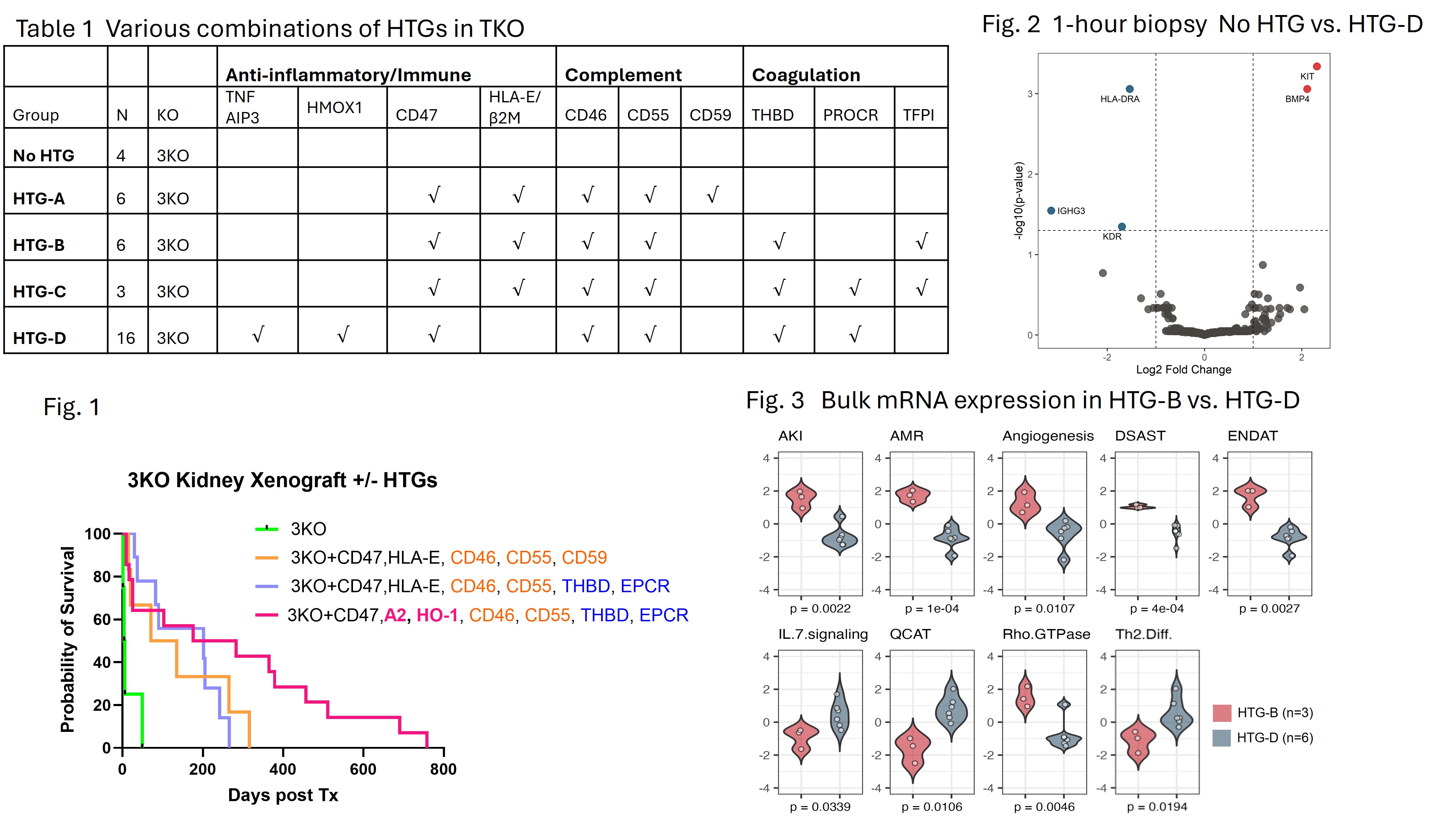Multiple human transgenes prolong survival of triple-carbohydrate knockout porcine kidney xenografts in nonhuman primates
Ahmad Karadagi1, Takayuki Hirose2, Grace Lassiter3, Ivy Rosales4, Toshihide Tomosugi4, Ryo Otsuka4, Ranjith Anand5, Jacob Layer5, Richard Pierson4, Benedict A Cosimi4, Michael Curtis5, Susan Low5, Wenning Qin5, Robert Colvin4, Tatsuo Kawai4.
1Division of Transplantation Surgery, CLINTEC, Karolinska Institutet, Stockholm, Sweden; 2Hokkaido University School of Medicine, Sapporo, Japan; 3Boston Medical Center, Boston, MA, United States; 4Center for Transplantation Sciences, Massachusetts General Hospital and Harvard Medical School, Boston, MA, United States; 5eGenesis Inc., Cambridge, MA, United States
Introduction: Porcine xenografts devoid of three major carbohydrate xenoantigens (3KO) are considered most desirable gene edits for clinical xenotransplantation. However, the necessity of including human transgenes (HTGs) remains controversial, especially in 3KO pigs. We evaluated, in nonhuman primates, immune responses and transplant outcome of 3KO kidney xenografts with or without various combinations of HTGs.
Methods: Kidney xenografts from gene edited pigs with 3KO alone (No HTG) or 3KO with various combinations (Table 1) were transplanted to cynomolgus monkeys. All recipients were treated with an immunosuppressive regimen, that included rituximab (20mg/kg on day -5) and ATG induction, followed by anti-CD154 (20mg/kg weekly) and mycophenolate mofetil (MMF) and 60 day-course of tacrolimus and steroids.
Results: Transplantation of 3KO kidney xenograft without HTG (No HTG) consistently resulted in early graft loss, significantly shorter compared to xenografts in all four groups with HTGs (Fig. 1) (p=0.0015). By adding 2 self-recognition pathway regulatory molecules and 3 complement related HTGs to 3KO in HTG-A, the hazard ratio was reduced to 0.18 (p= 0.014) compared to No HTG. Addition of coagulation pathway regulatory molecules (THBD, TFPI and PROCR) in HTG-B and C, failed to further extend graft survival. In association with adding the two anti-inflammatory HTGs, TNFAIP3 and HMOX1 in HTG-D, xenograft survival with excellent kidney function beyond 1 year was achieved, with the longest survival exceeding 2 years (Fig.1). Transcriptomic analysis of 1-hour biopsy already showed significantly higher expression of genes (HLA-DRA and IGHG3) related to immune activation in No HTG group vs. HTG-D (Fig. 2). Protocol biopsies at 3 months revealed enrichment of seven distinct pathway representing rejection in HTG-B, compared to HTG-D, suggesting beneficial effects of adding anti-inflammatory HTGs, TNFAIP3 and HMOX1 (Fig. 3).

Conclusions: Multiple combinations of HTGs, particularly those with anti-inflammatory properties, significantly extended the survival of 3KO kidney xenografts, accompanied by more favorable transcriptomic responses.
[1] Kidney xenotransplantation
[2] Nonhuman primate model
[3] Xenograft survival